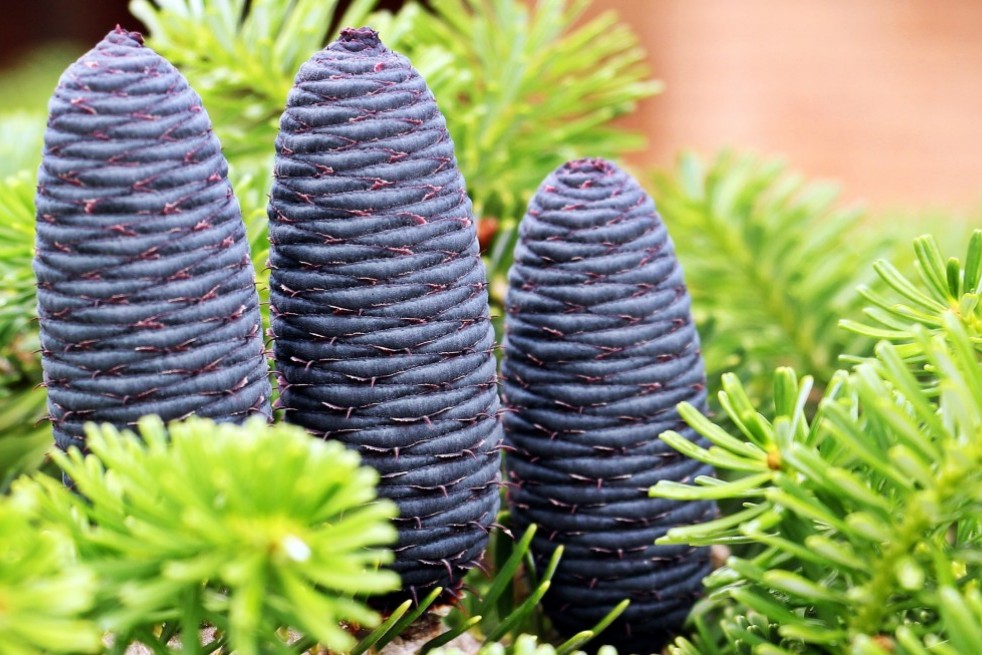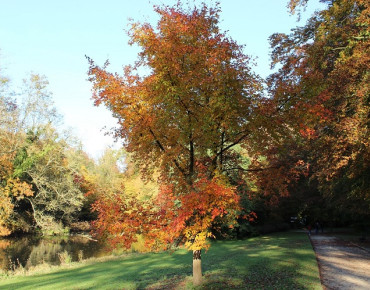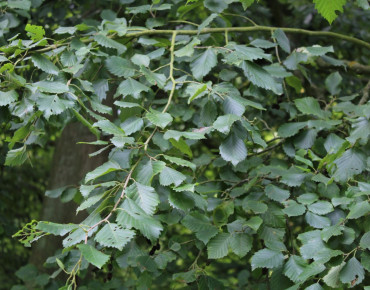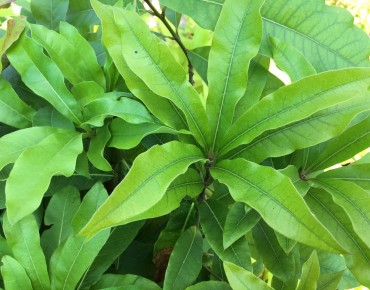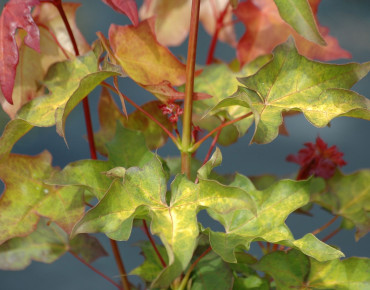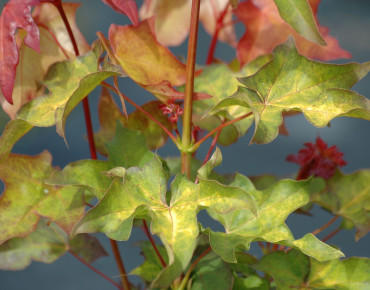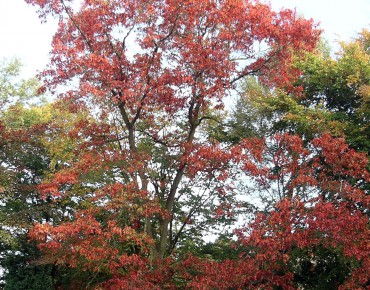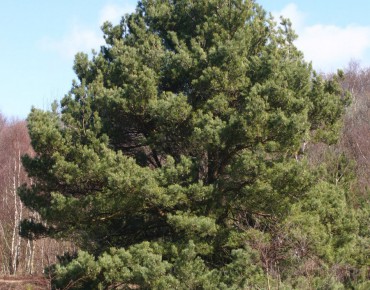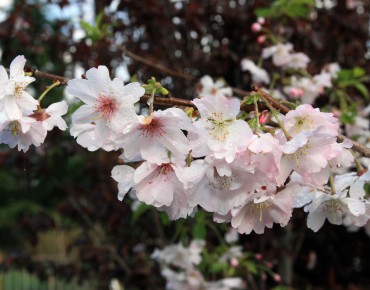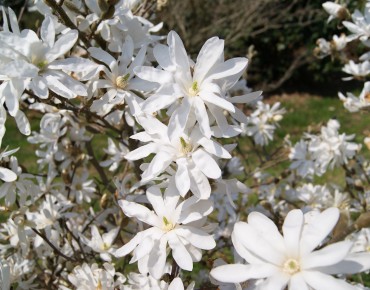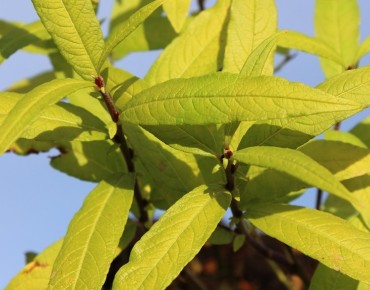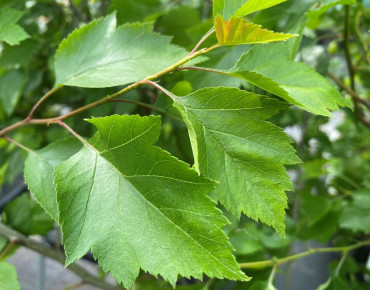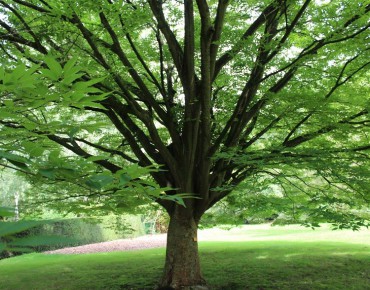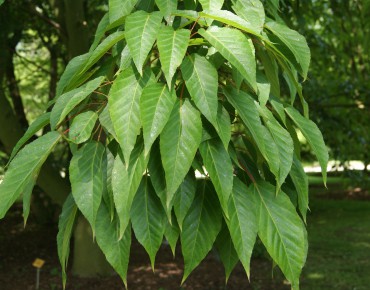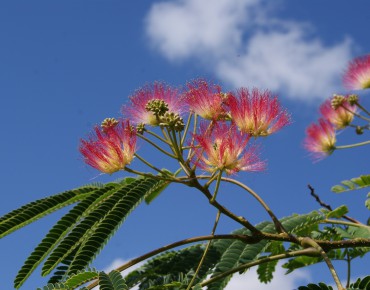Korea fir
Abies koreana
Description
Abies koreana – Korea fir
The Korea fir (Abies koreana) is a small conifer, with a compact and elegant shape, much appreciated for its dense foliage and especially for its spectacular production of purple cones from a young age. Hardy, undemanding and decorative all year round, it is perfectly suited to small gardens, conifer beds or even pot culture on balconies or terraces.
Origins and characteristics
Native to the mountains of South Korea, where it naturally grows at high altitude, Abies koreana is a fir suited to cool and humid climates. It belongs to the Pinaceae family and was introduced to Europe for its ornamental qualities and limited growth.
It is one of the few conifers to form cones from a young age, even on potted plants, making it a highly prized horticultural curiosity.
Description and particularities
The Korea fir forms a small compact pyramidal conifer, with slow growth, shiny dark green foliage with silvery undersides. Upright cones appear in summer, often from 1 m high, turning a very decorative purple to dark blue.
- Adult height: 1.5 to 3 m at 10 years; up to 5 to 7 m at maturity (around 30–40 years)
- Width: 2 to 3 m
- Foliage: Evergreen, shiny dark green, silvery underside
- Shape: Regular conical, compact
- Growth: Slow to moderate (10 to 20 cm/year)
Plant characteristics
- Type: Ornamental evergreen conifer
- Hardiness: Excellent (down to -25 °C or lower)
- Cones: Upright, dark purple to blue, becoming brown with age (6 to 8 cm)
- Flowering: Spring (male and female flowers on the same tree)
Flowering and fruiting
- Cones form in spring, mature in autumn, and remain visible for several months, decorating the tree silhouette all winter.
- They grow upright on upper branches, providing a striking contrast with the foliage.
Exposure and soil
- Exposure: Non-burning sun or partial shade
- Soil: Acid to neutral, cool, light, well-drained.
- Avoids calcareous or too dry soils
- Likes cool and humid environments, such as mountain gardens or light woodland
Planting
To be done in spring or autumn, in well-prepared soil.
- Add ericaceous compost or leaf mold if the soil is heavy or calcareous.
- Water regularly at planting and mulch to retain soil moisture.
- In pots: use a well-draining conifer or ericaceous potting mix.
Watering
- Water regularly in summer during the first years.
- Do not let the soil dry out completely.
- In pots: water more often but avoid waterlogging.
Pruning
- No pruning necessary
- Remove dead or poorly positioned branches in late winter if needed
- Maintains its natural dense and harmonious shape
Propagation
- By seed (long process, mainly for nurseries)
- By grafting for specific cultivars
Use in the garden
Perfect for:
- Small gardens or cool rock gardens
- Beds with dwarf or ornamental conifers
- Terraces and balconies in large pots
- Alpine or heath gardens
- Solitary planting in lawns or combined with Japanese maples, rhododendrons or pieris
Disease protection
- Very resistant and little susceptible to pests
- Avoid excessive standing water (risk of root rot)
- In warm and dry climates: risk of needle scorch
Tips for optimal growth
- Plant in a cool, bright but not burning location
- Keep soil acidic and well-drained, mulch with leaves or bark
- Never prune as a hedge or “Christmas tree” shape: respect the natural growth habit
- In pots: repot every 3–4 years to refresh substrate
Abies koreana, or Korea fir, is a compact and refined botanical gem, perfect for conifer lovers. It enchants with its spectacular cones, perfect growth habit and excellent hardiness, even in small spaces. An essential species for collectors’ or zen gardens, terraces and miniature borders.
Features
- Common name : Korea fir
- Family : Pinaceae
- Category : conifers
- Spread : 2 - 3 m
- Foliage : evergreen
- Fruit : Green then blue-violet cones
- Use : Isolated - shade - screen - rock garden - pot
- Soil : rich and well-drained
- Habit : pyramidal
- Earth to use : 75% universal potting soil and 25% heath earth
- Enemies : cochineal insects - aphids - red spiders
- Possible diseases : armillaire
Expédition & livraison
How does the delivery work?
 As soon as you place your order your plants are selected
As soon as you place your order your plants are selected Each order is processed individually.
Each order is processed individually. Plants are packed, staked and labeled.
Plants are packed, staked and labeled. Packaging is carefully implemented to avoid any problems.
Packaging is carefully implemented to avoid any problems. Packages are ready to be shipped.
Packages are ready to be shipped.
Our delivery methods
Shipping of our plants throughout Europe (except overseas and islands).
Customer reviews

